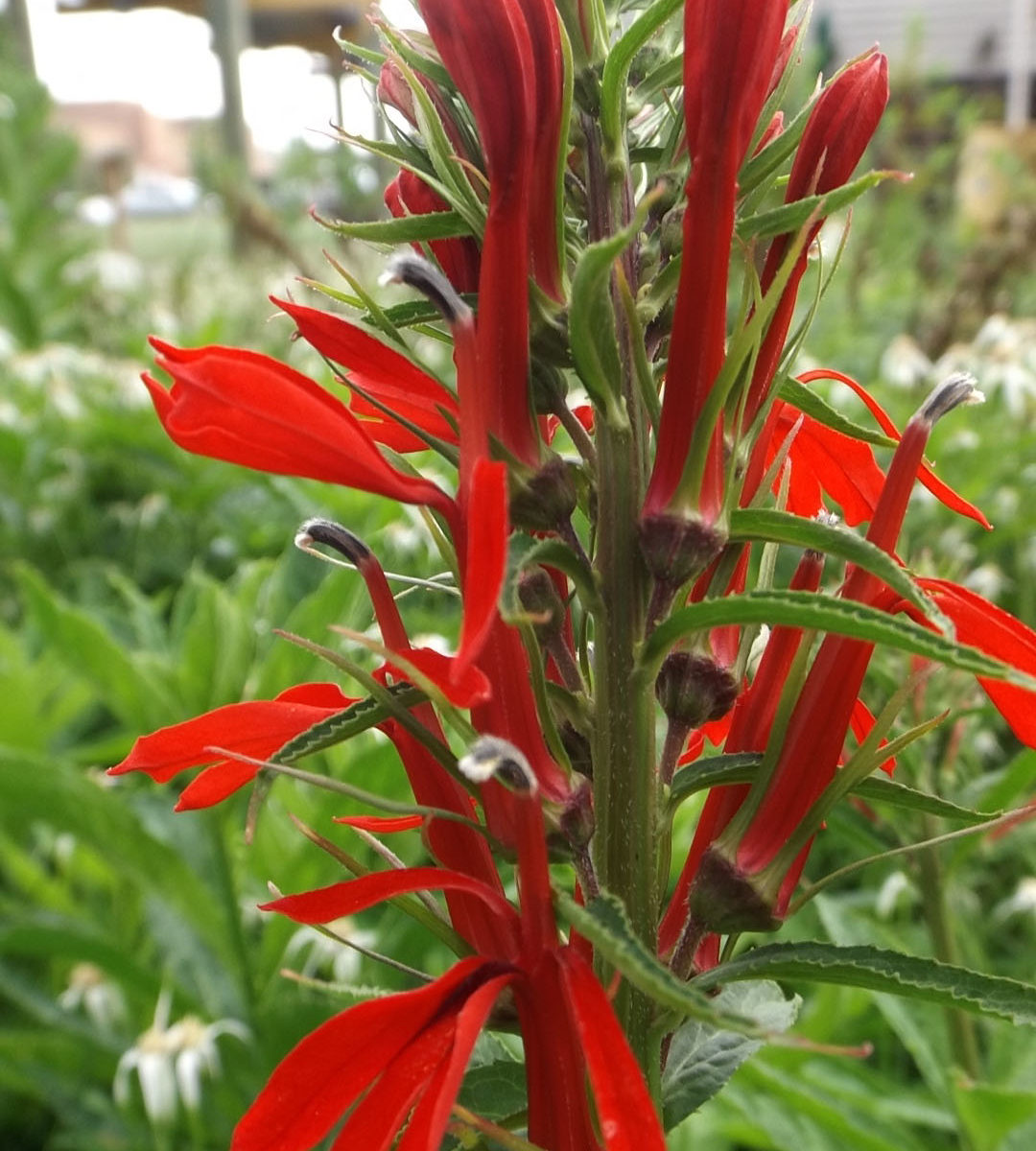
Submitted by Derrick Stowell, HGTV – UT Gardens educator
Cardinal flower, also known as Lobelia cardinalis, is a beautiful native perennial found throughout North America. It can be an overlooked flower for the landscape, but don’t rule out this great native. It was first found in wetlands of Canada when European settlers entered the area in the 1600s. Wild populations of this plant have been declining as wetlands have been drained and as more land has been developed for human use.
There are numerous common names for this plant, including scarlet lobelia and red lobelia. The bloom, which is usually scarlet, is what really sets this plant apart from other summer-flowering perennials. A raceme forms a single, unbranched inflorescence with multiple small flowers attached. The flowers can range from scarlet to pink or even white. Cardinal flower grows 3- to 4-feet tall with a spread of about 2 feet. Its vertical growing habit adds a strong linear component to your garden. Blooms can be present from early to late summer. In the wild, they begin in late summer and bloom into fall if moisture is adequate.
Cardinal flower is an excellent choice for a perennial border or naturalized garden area. It grows best in partial shade and in moist conditions. However, it can also tolerate full sun in cooler summer climates. The native varieties are often found growing along streams or other wet natural areas. Because of its love of moist conditions, it is an excellent selection for a rain garden. In fact, you can find this plant growing in the rain garden in the UT Gardens, Knoxville.
If you are not growing Cardinal flower in a rain garden, you will want to amend your soil with organic matter such as compost and mulch to help keep soil moisture levels to its liking.
This perennial is one of those “plant it and forget it” selections and does not have any serious pest or disease problems. Cardinal flower can also be propagated by clump division or seed. Just be sure to be able to identity young shoots so as not to remove seedlings when weeding. It is cold hardy from Zones 3-9.
There are several cultivars for this plant including ‘Alba’ with white flowers, ‘Heather Pink’ with pink flowers and a new introduction called ‘Black Truffle’ which is sure to stand out with its dramatic, dark chocolaty-purple foliage and bold red flowers. Superior to other dark-foliaged Lobelias on the market, ‘Black Truffle’ holds this deep color throughout the growing season.
One reason I enjoy this plant is that it produces nectar for humming birds and butterflies. When it blooms at the UT Gardens, you can almost always see a humming bird or butterfly flying around getting a snack. Another plus is that deer tend to leave it alone!
Derrick Stowell plans and conducts educational programs for the University of Tennessee Gardens, Knoxville. The UT Gardens include plant collections located in Knoxville, Jackson and Crossville. Designated as the official botanical garden for the State of Tennessee, the collections are part of the University of Tennessee Institute of Agriculture. Their mission is to foster appreciation, education and stewardship of plants through garden displays, educational programs and research trials. The gardens are open during all seasons and free to the public. See utgardens.tennessee.edu for more information.
Contact:
Derrick Stowell, UT Gardens, Knoxville, 865-974-7151
Patricia McDaniels, UTIA Marketing and Communications Services, 615-835-4570